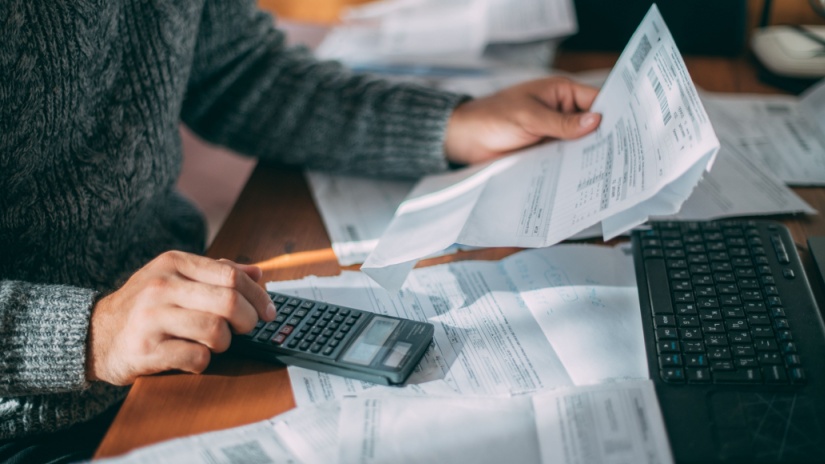Knowledge Centre
Understanding controlled load

Not all household devices are energy efficient. Appliances such as air fryers, kettles, air conditioners, and dryers consume huge amounts of energy in short periods, leading to higher energy bills - and a bigger slap to your wallet.
However, you can save money while still using these appliances, so don't panic. While most people are familiar with basic electricity tariffs, like single rate and time of use, many overlook the 'controlled load' tariff.
This tariff, available with some energy plans, is designed to reduce the cost of energy-hungry appliances like water heaters. It's an option worth considering if you're looking to lower those overall energy expenses. Let’s talk more about it.
What is a controlled load tariff?
A controlled load tariff is designed for large appliances that consume a large amount of energy and are metered separately from the rest of your property.
This tariff is commonly used for hot water systems, which can make up a substantial portion of your household's energy usage. However, depending on your meter system, you may be able to connect multiple appliances to this tariff.
Controlled load tariffs are available in New South Wales, Victoria, South Australia, Queensland, and Tasmania. The appliances eligible for a controlled load tariff vary depending on your provider and individual energy circumstances.
How it works with a controlled load tariff:
- Your nominated appliances draw power from a dedicated circuit, which is metered separately.
- The energy used on this dedicated circuit is charged at a lower rate than your regular energy usage.
- Any electricity usage not included in your controlled load is charged at the general usage rate.
- You may also be billed a small "service charge" daily, depending on your network.
Types of controlled loads
The types of controlled load tariffs offered vary across Australia.
In New South Wales, Queensland, and the Australian Capital Territory, customers can choose between two types of controlled load tariff:
- NSW: Controlled Load 1 and Controlled Load 2
- Queensland: Tariff 31 and Tariff 33
- ACT: Controlled load
Victoria, Tasmania, and South Australia offer only one controlled load tariff option each.
- Tasmania: Tariff 62 or Tariff 63 - some residents may be on Tariff 61, no longer available to new customers.
- Victoria: Controlled load tariffs or a dedicated circuit charge
- SA: Controlled load
Western Australia doesn't have a statewide option, but some providers offer plans for water heating systems that function similarly to controlled load tariffs.
What's the difference between load 1 and 2?
Controlled load 1, Tariff 31, and Tariff 63 typically offer a few hours of usage each day, often overnight, at a cheaper rate compared to general electricity usage.
On the other hand, controlled load 2, Tariff 33, and Tariff 61 provide a longer period of availability, including overnight and additional hours during the day, but they are slightly more expensive.
Keep in mind that the term used for controlled load tariffs may vary in your state, such as "dedicated circuit" or "off-peak."
| Tariff | Controlled load 1/Tariff 31 | Controlled load 2/Tariff 33 |
| Power available | Shorter stretch, usually overnight | Longer stretch, usually split into night/day segments |
| Usage rates | Lower than general usage | Slightly higher than Controlled load 1 |
| Separate supply charge? | Yes | Yes |
| Useful for | Customers who use large water tanks that store heat all day | Customers with smaller water tanks, more flexible |
What appliances can I use on a controlled load tariff?
Your electric hot water system is commonly connected to a controlled load tariff, but it's wise to consider adding other high-energy-consuming systems or appliances.
Common appliances eligible for controlled load tariffs in Australia include:
- Electric hot water storage systems
- Pool pumps
- Underfloor heating
- Electric slab heating
These appliances typically consume a significant amount of electricity and can be programmed to operate during off-peak periods when electricity rates are lower.
The specific appliances eligible for a controlled load tariff can vary depending on your electricity distributor, retailer, and the wiring of your house.
Is there a catch?
You might be wondering what's the catch with controlled load tariffs. While appliances connected to your controlled load benefit from lower rates, there's a trade-off.
Electricity is supplied to these appliances for a limited time per day. So, if you're thinking of putting your entire household on the cheaper metered system, think again. You wouldn't want to restrict all your electricity use to just a few hours a day, right?
Individual electricity retailers determine the hours of supply, usually during non-peak demand periods. This can range from eight to 18 hours per day.
Another consideration is that in some states, customers may be charged a separate supply charge for their dedicated controlled load circuit. This charge is in addition to the standard supply charge for remaining connected to the network on your usual energy plan.
How much money will I save?
If you haven't switched to a controlled load tariff yet, it's worth considering. Most homes have at least one major heating appliance, typically the hot water system, and the larger the appliance, the more you can potentially save.
The amount you can save depends on various factors. Distribution networks and tariffs vary between states, and your individual usage patterns also play a role. You might even be able to get a better deal on your current setup by taking advantage of new customer discounts.
However, controlled load tariffs might not be suitable for everyone, depending on your appliance usage patterns. The cost of adjusting your metering setup and potentially hiring an electrician might not be worthwhile for renters. Instant or continuous flow hot water systems might be better suited to more flexible energy plans, instead.
Here are some examples of potential savings with controlled load tariffs in Australia:
- Electric hot water storage system: Switching to a controlled load tariff can save you around $200 to $300 per year compared to a standard tariff.
- Pool pumps: Running your pool pump during off-peak hours with a controlled load tariff can save you approximately $200 to $400 annually, depending on the size of your pool and pump.
- Underfloor heating: Using a controlled load tariff for your underfloor heating system can result in savings of around $100 to $200 per year, depending on the size and usage of the system.
- Electric slab heating: With a controlled load tariff, electric slab heating can save you approximately $150 to $250 annually, depending on the size of the area being heated.
Remember, these savings are estimates and actual savings will depend on factors such as your electricity rates, usage patterns, and appliance efficiency.
How can I tell if I'm already on a controlled load?
Your current energy plan, especially if you're in NSW or Queensland, might already include a controlled load tariff. However, if you're uncertain or planning to install a device that could benefit from cheaper electricity, it's wise to confirm.
- Start by contacting your retailer. They can inform you if you're already on a controlled load tariff and help you add one if needed.
- Check your metering setup. Controlled load tariffs often require separate meters for nominated devices. Your retailer can assist you in setting up a dedicated meter for any devices.
- Review your latest electricity bill. The terminology for controlled load tariffs varies by state but is typically labelled as ‘controlled load’, ‘off-peak’, or tariff 31, 33, 61, or 63.
Also, consider comparing your current energy plan to explore if there are better deals available for your controlled load tariff. Major heating appliances, whether for your pool, living space, or water, significantly impact your overall energy costs.
Is a controlled load the right option for me?
Most households can save money with a controlled load tariff. The amount you save depends on various factors, but generally, a controlled load tariff won't make your bills higher.
However, if your controlled load tariff has a supply charge, you might end up paying more if the house is often empty or the controlled load appliance isn't used much. This is because supply charges apply even if you don't use much electricity.
You should also think about whether you're okay with your electricity being limited to off-peak hours for certain appliances.
If you have a small electric hot water system or an instant system, a controlled load tariff might not be right for you. If you want to add another appliance, like a pool pump or air conditioner, to the controlled load tariff, you might need an electrician to create a new circuit just for that appliance.
Get in touch
To learn more about your current tariff and to determine whether you need to switch providers to get onto a plan that offers a controlled load, contact Compare Energy today.

